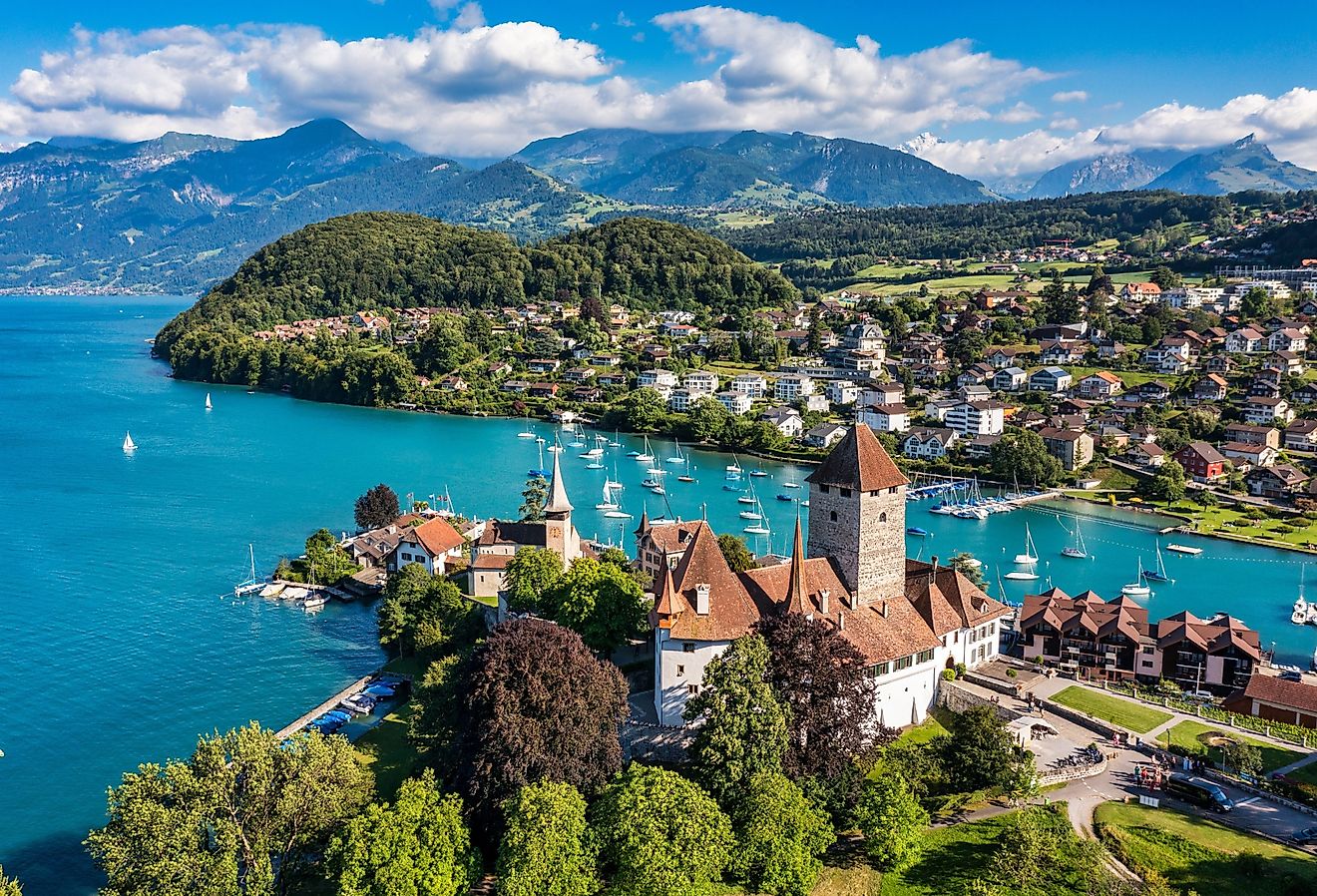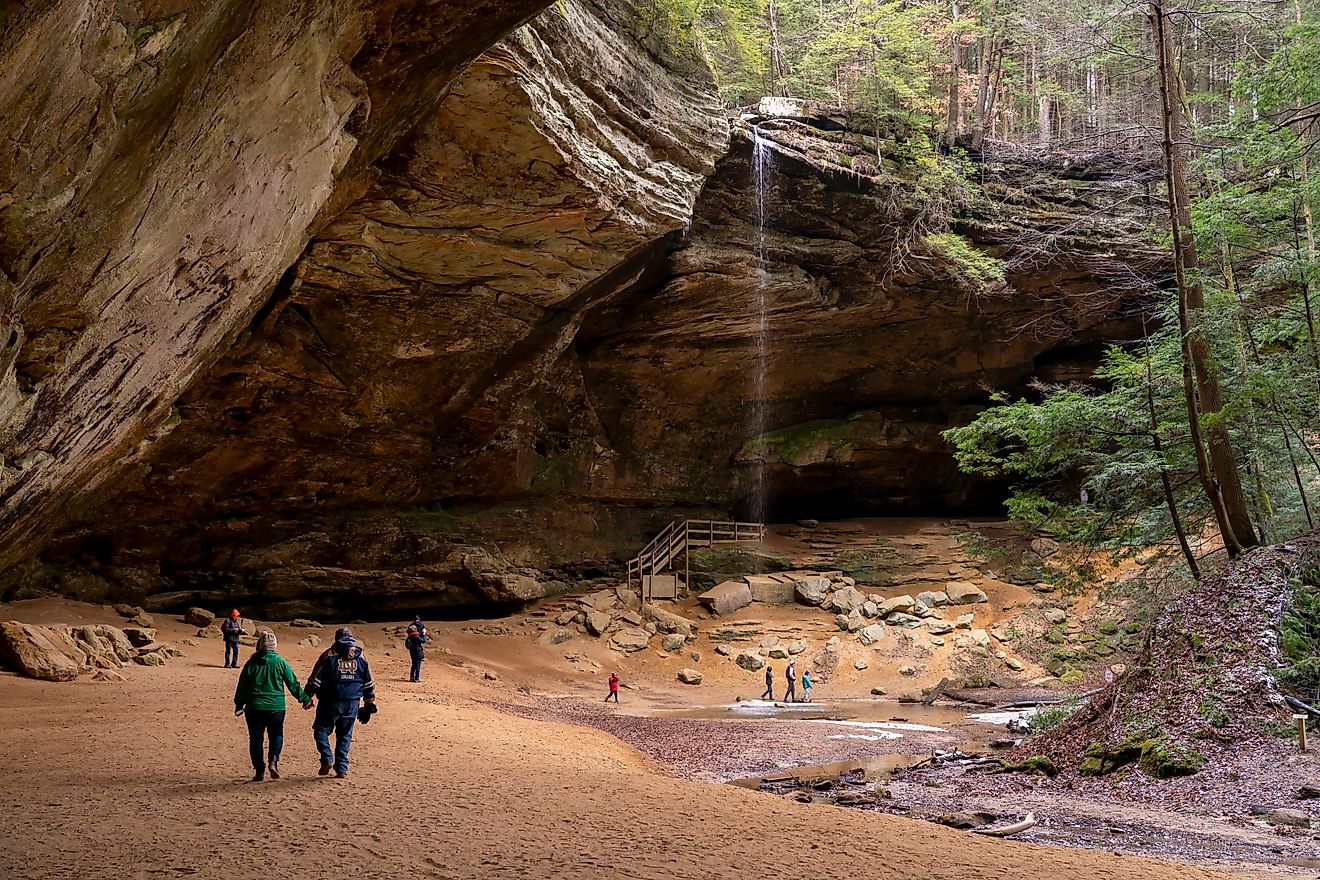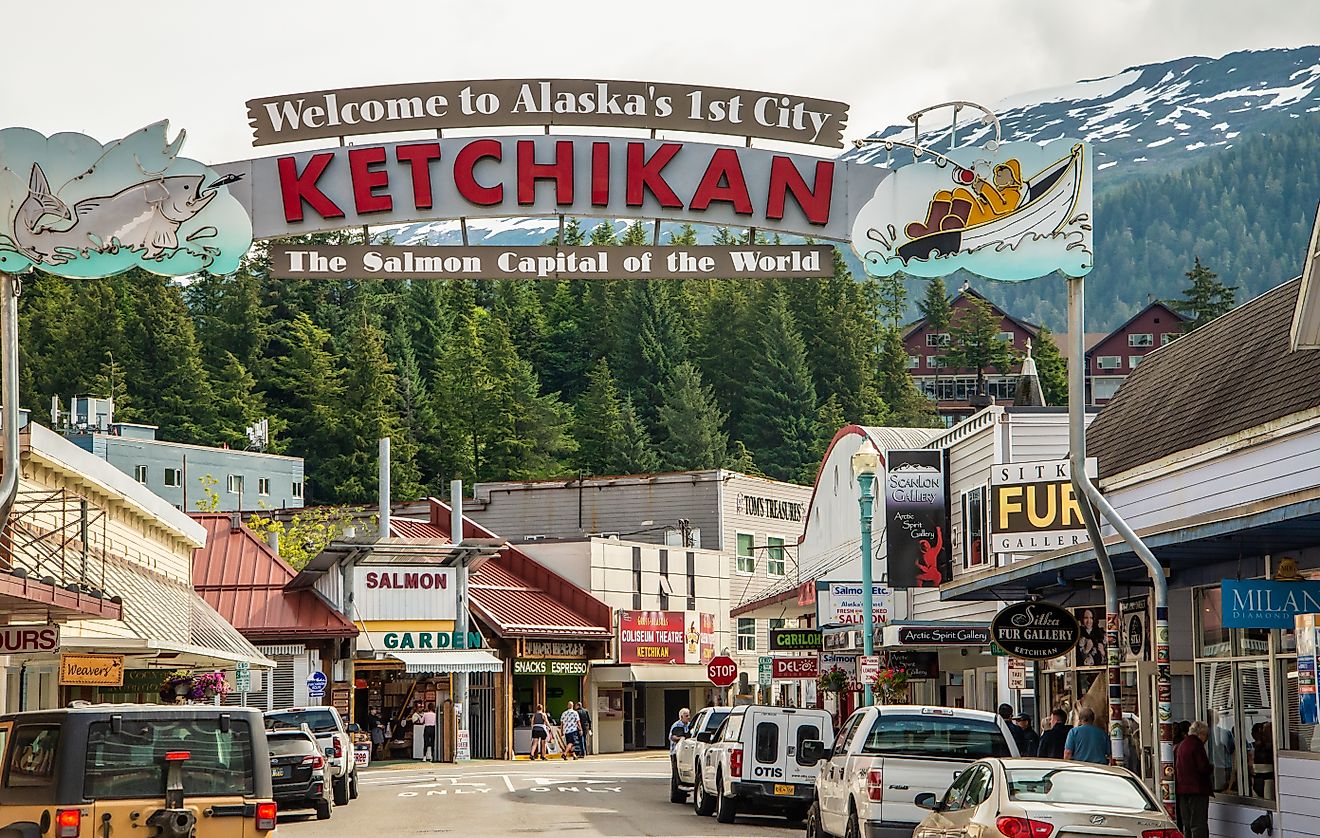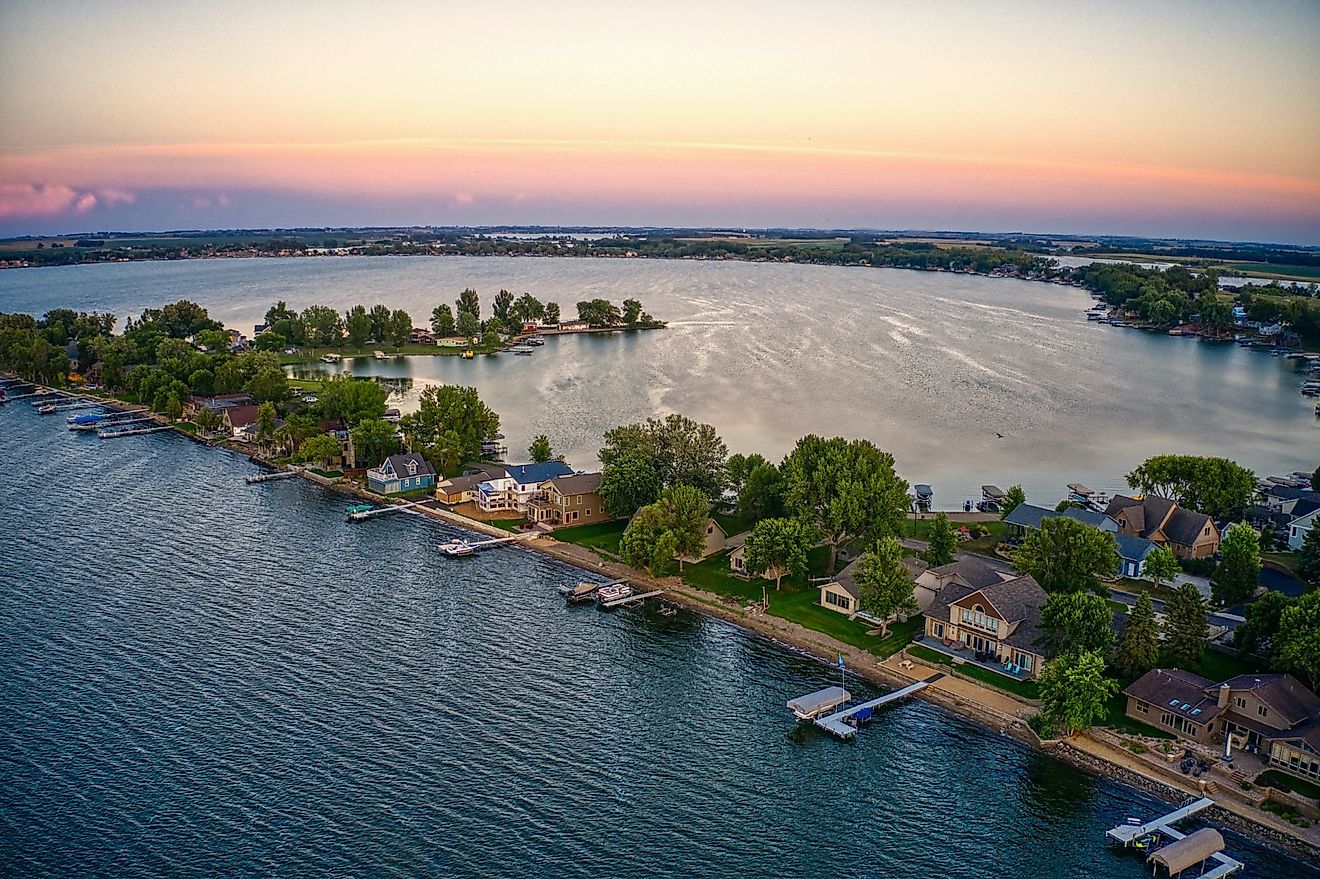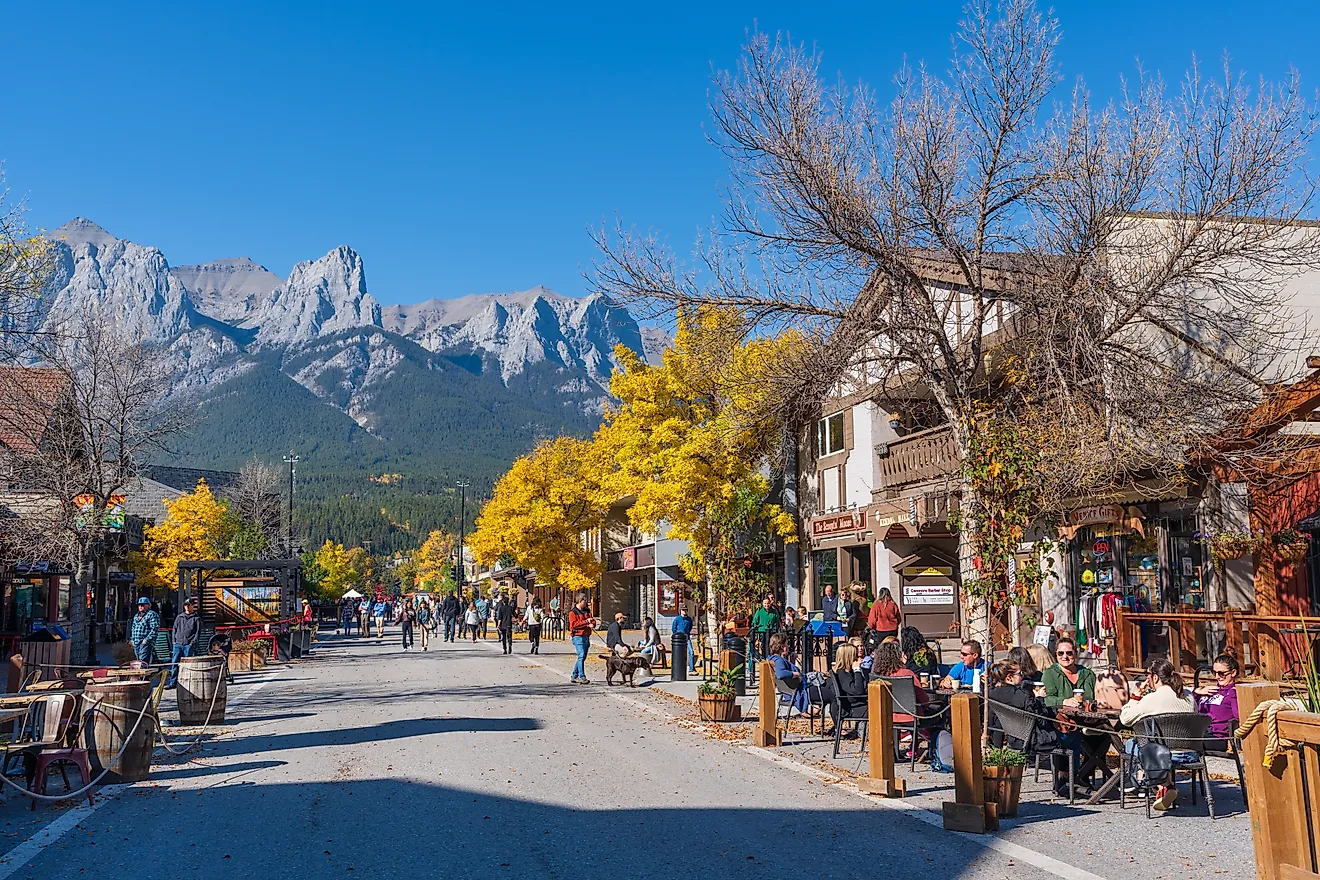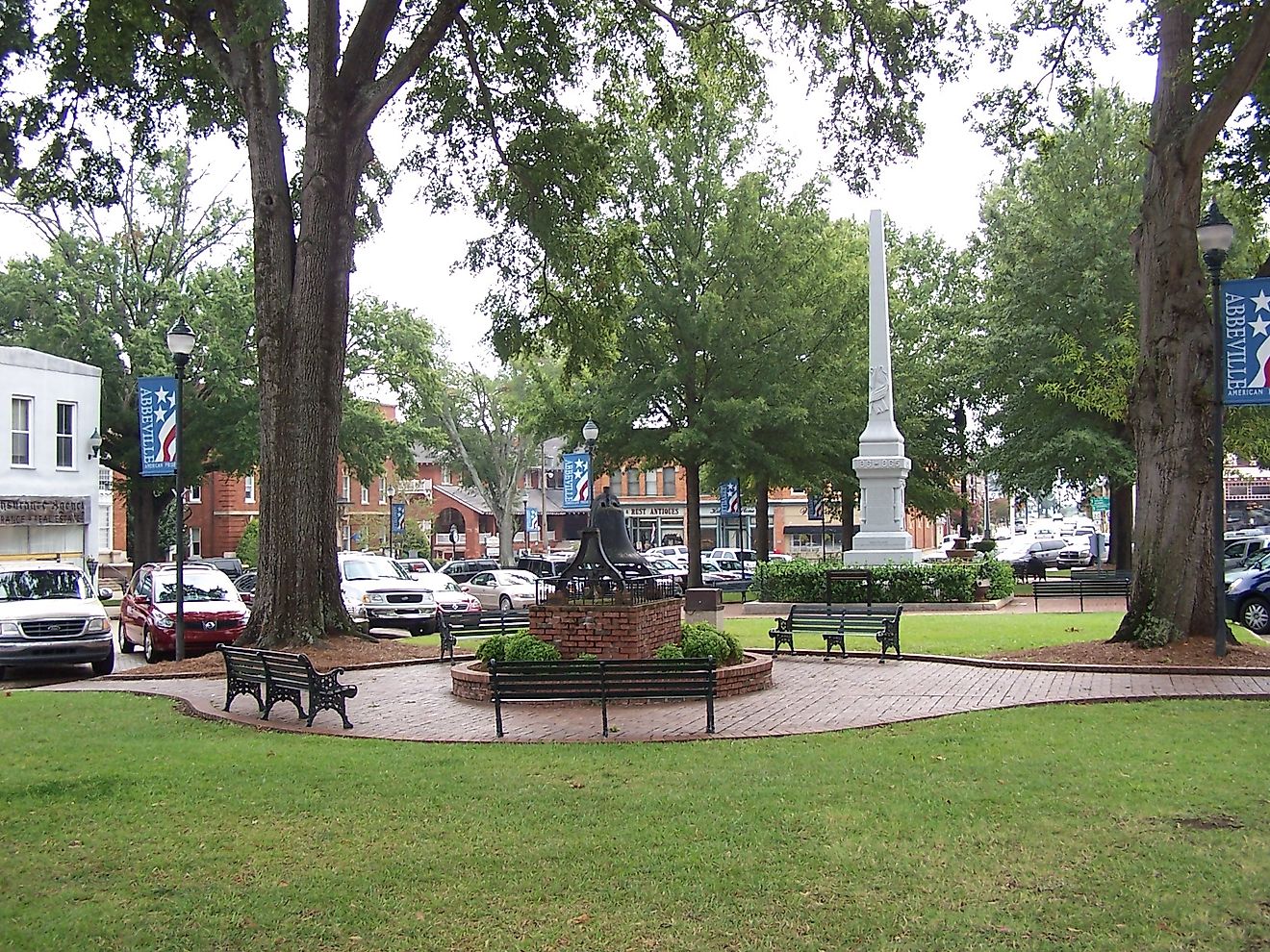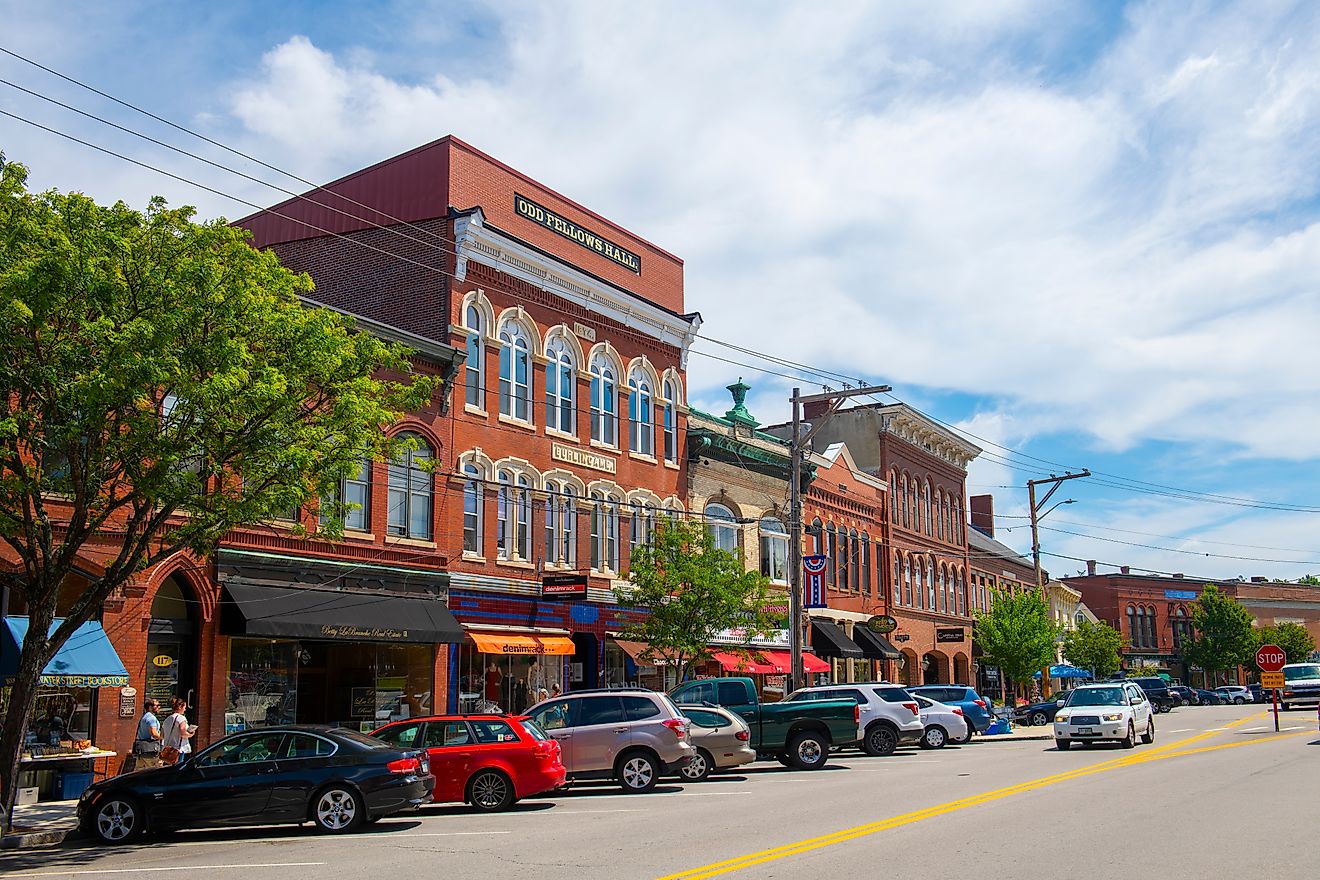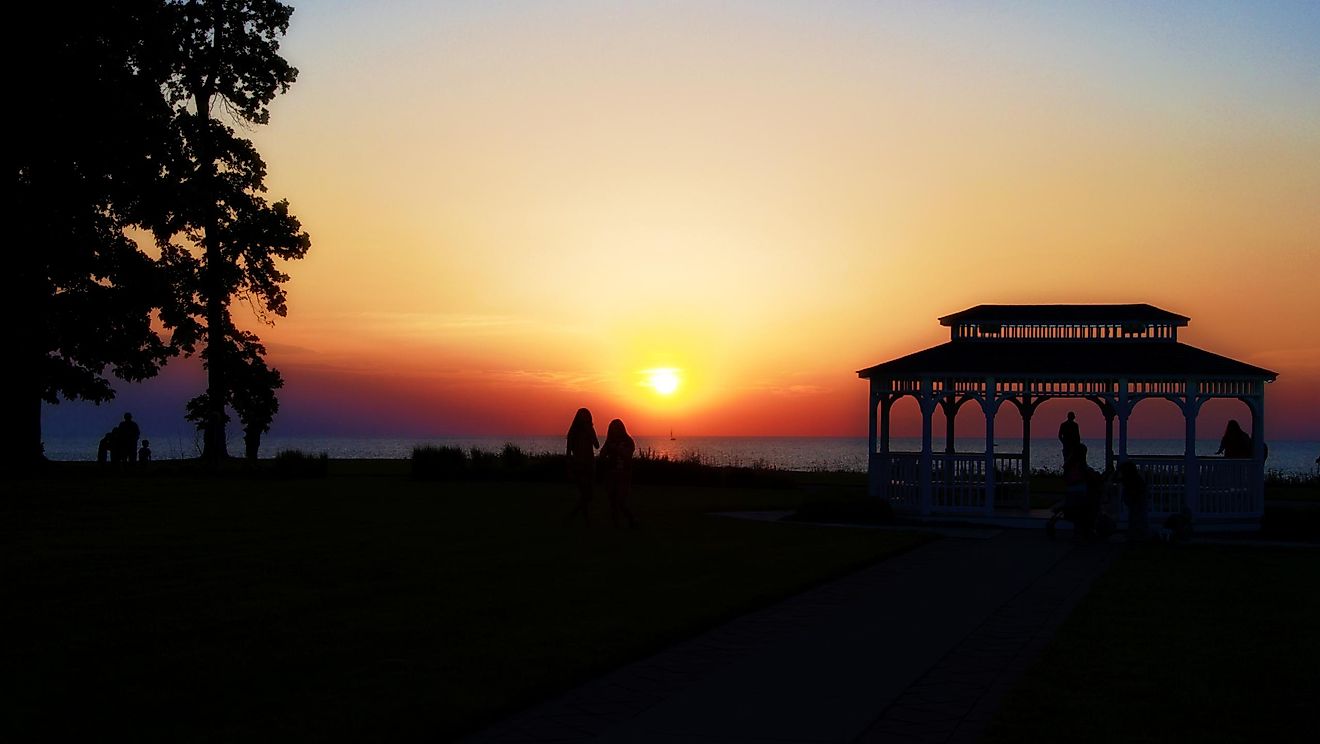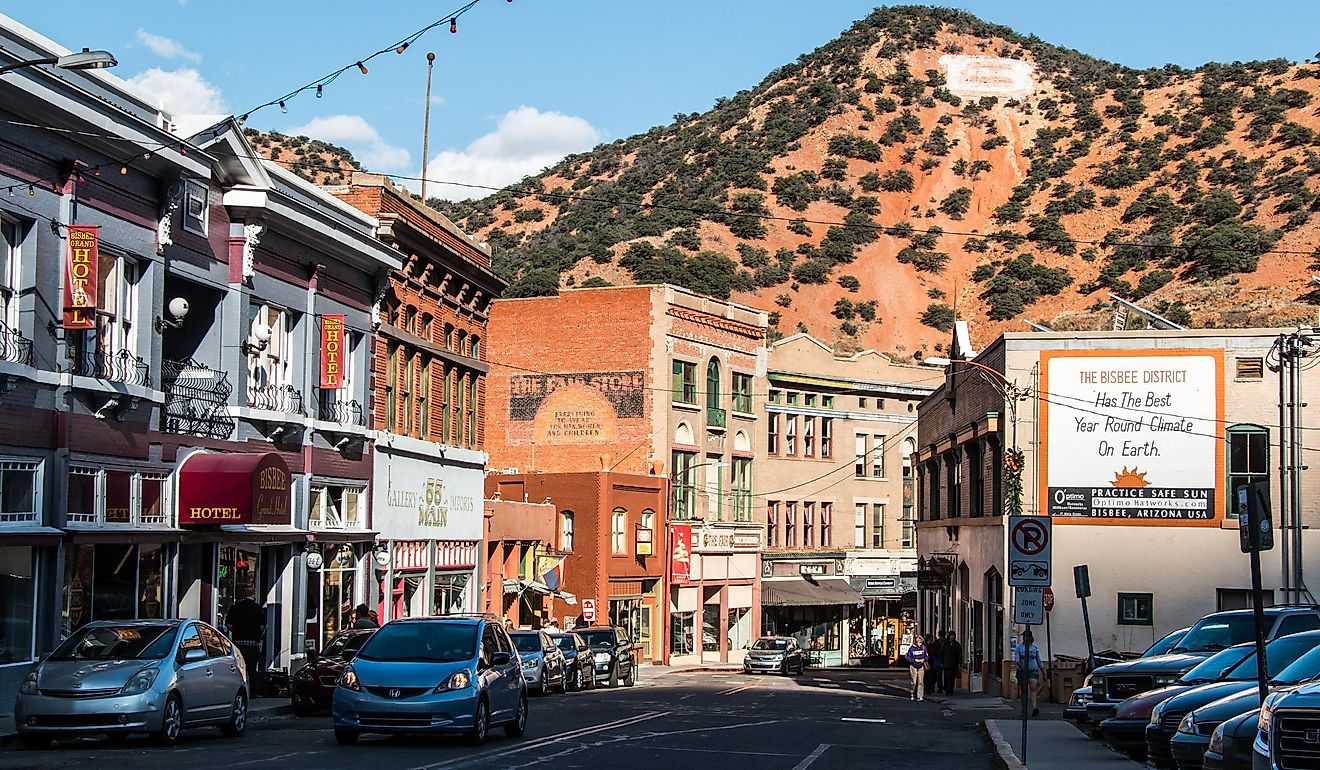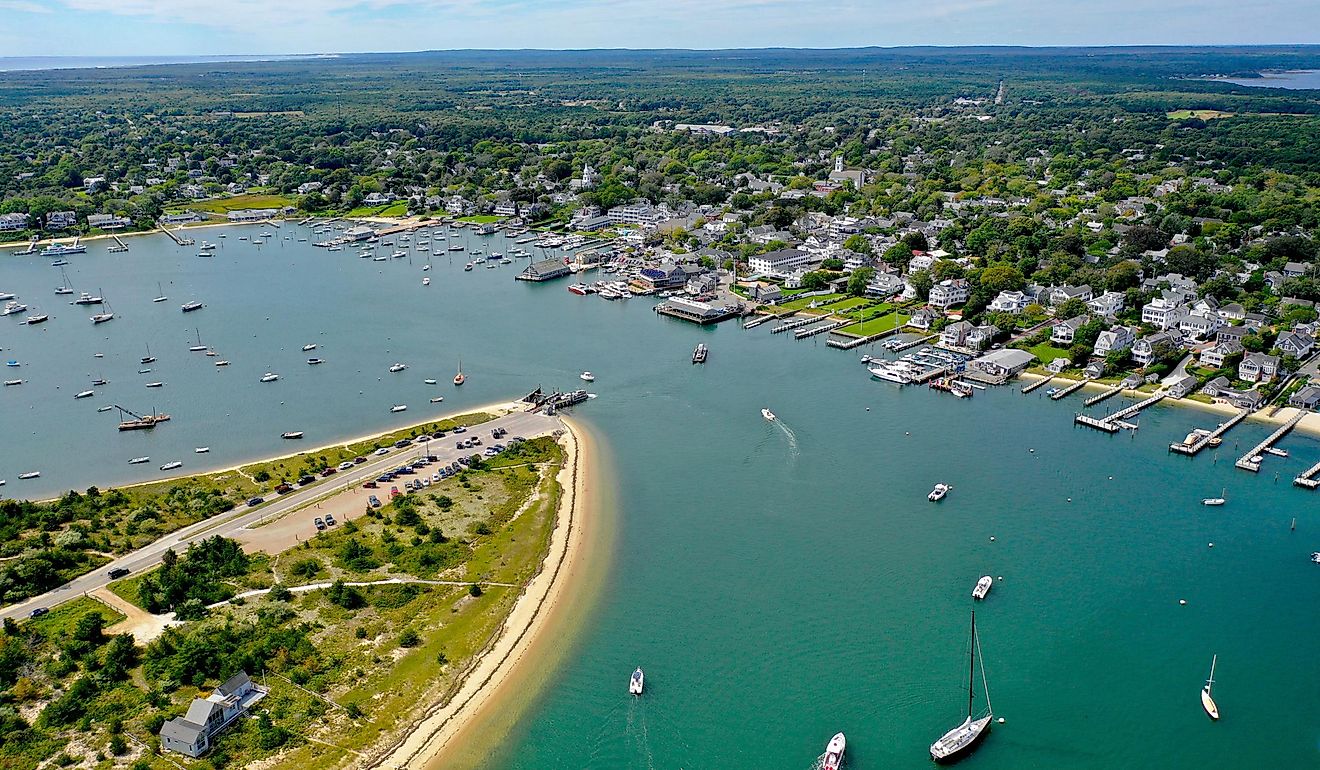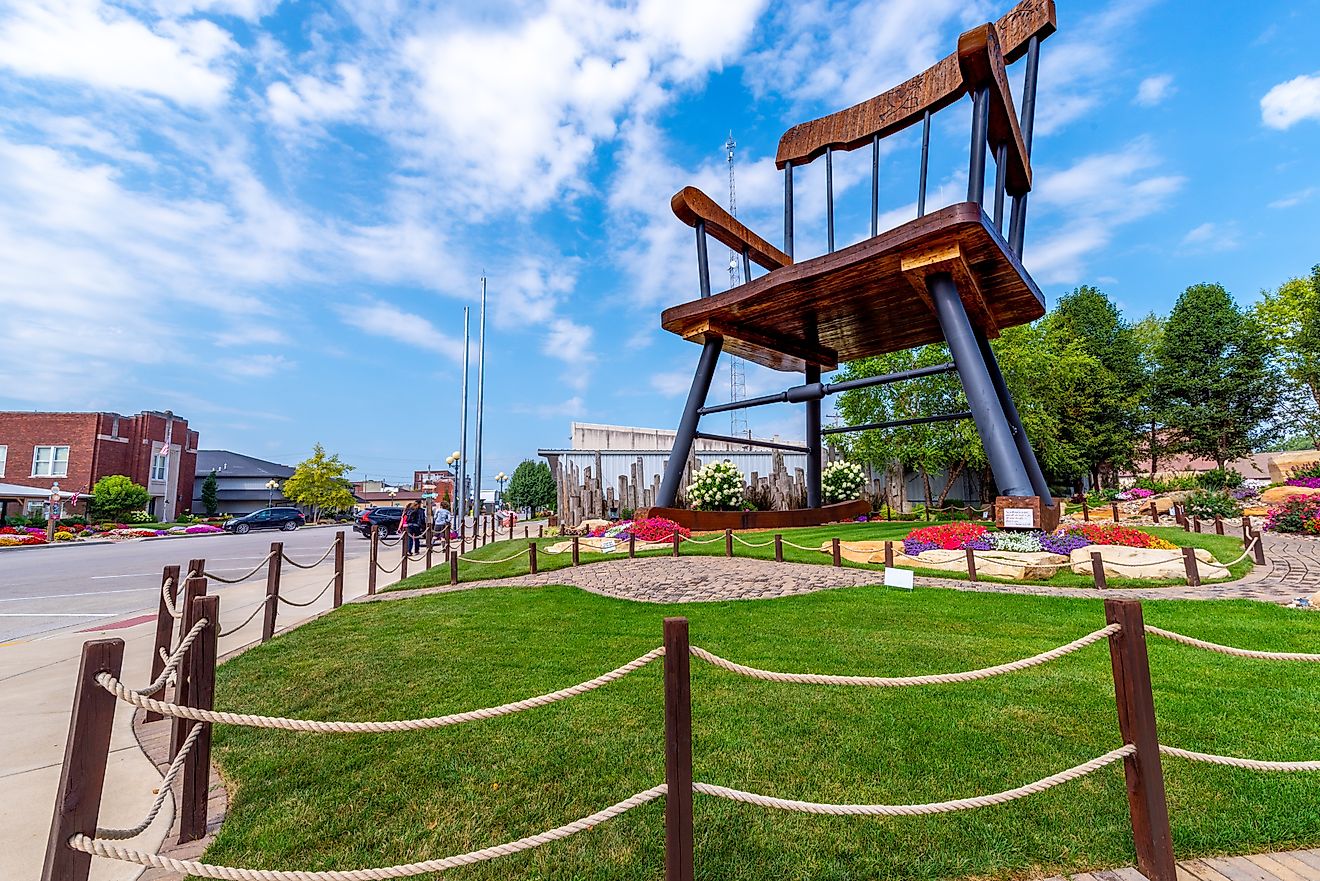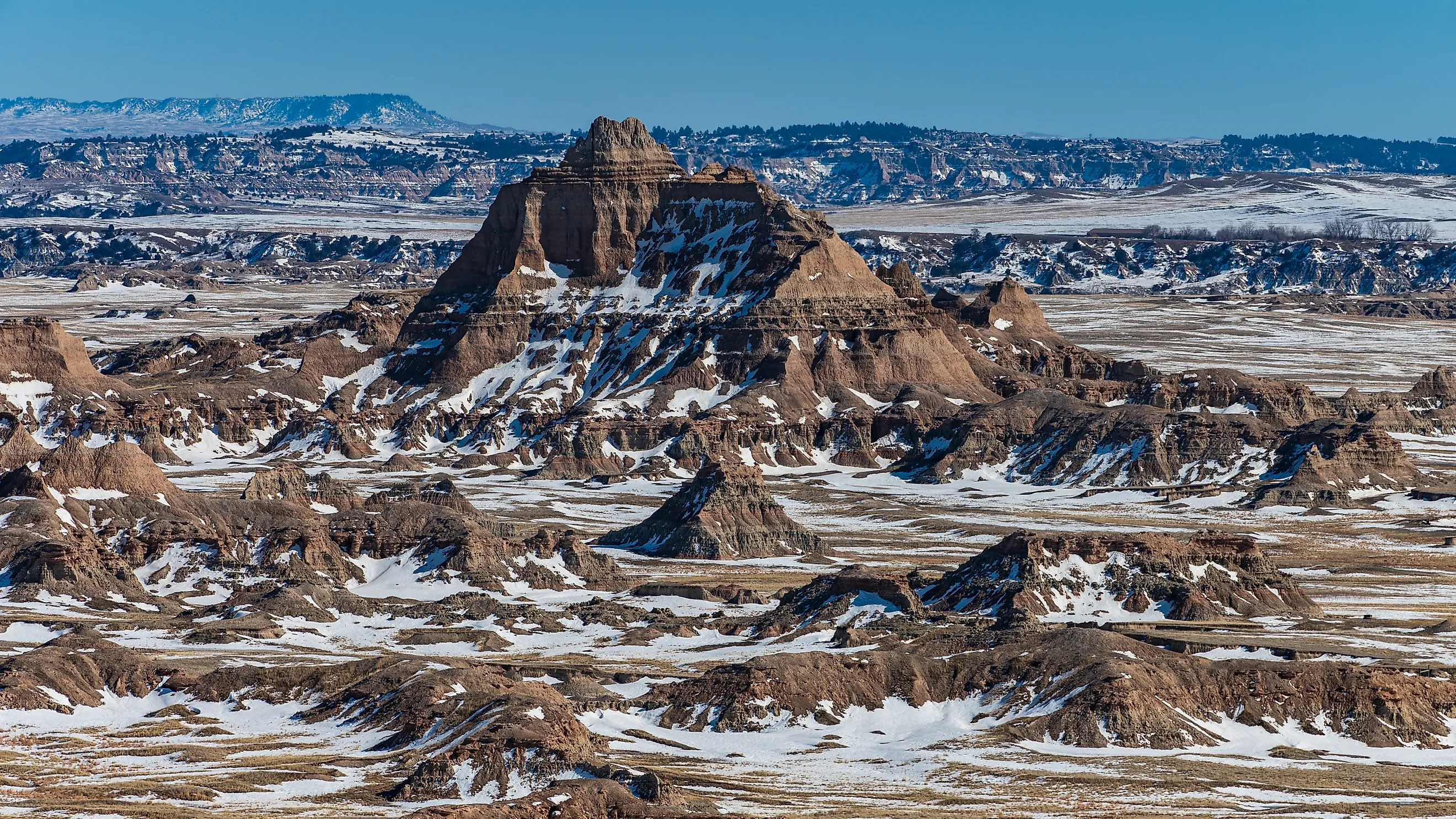
Badlands National Park Reveals Ancient Fossils
Badlands National Park, located in southwestern South Dakota, can seem like a place straight out of a science fiction film, with its Martian-like butte labyrinths and jagged, eroded appearance. Spanning over 240,000 acres, this national park is often regarded as a premier tourist destination due to its breathtaking panoramic views, intriguing geological formations, and rare wildlife, including bison and bighorn sheep.
A feature of the park that's frequently overlooked, however, is that it's a paleontologist's paradise, with a plethora of fossils found beneath its rocky layers. The geological formations, which were initially created by an ancient sea, now hold the secrets to what life was like millions of years ago, waiting for scientists to uncover them.
From Sea to Stone
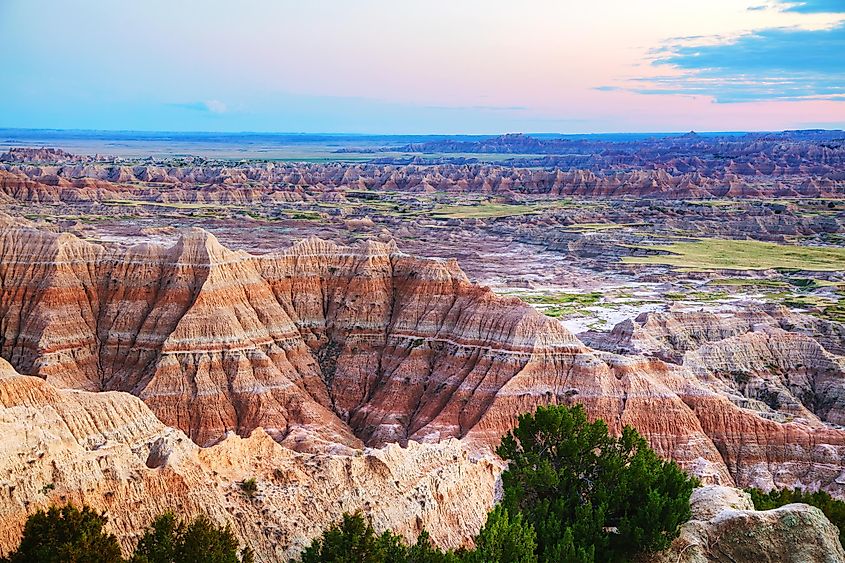
The story of how Badlands National Park came to be is a perfect example of how the processes of deposition and erosion work. Many millions of years ago, most of South Dakota was covered by an ancient sea known today as the Western Interior Seaway. This seaway was over 2,000 miles long and stretched from the Gulf of Mexico to the Arctic Ocean. The naturally flowing water caused sediments, including volcanic ash, sand, and mud, to settle along the seabed, a process called deposition.
Several million years later, the area began to rise, and the sea began to retreat due to tectonic forces acting in the Earth’s crust and upper mantle. As the area began to rise, this exposed the layers of sediment to the elements, and the process of erosion began to play its part in the creation of the national park. The natural wind, rain, melting snow, and streams of water that then had access to the rock eroded the formation into the breathtaking, plunging canyons and Martian-like butte labyrinths that can be seen when visiting the park located in South Dakota today.
Things To Do
Hiking
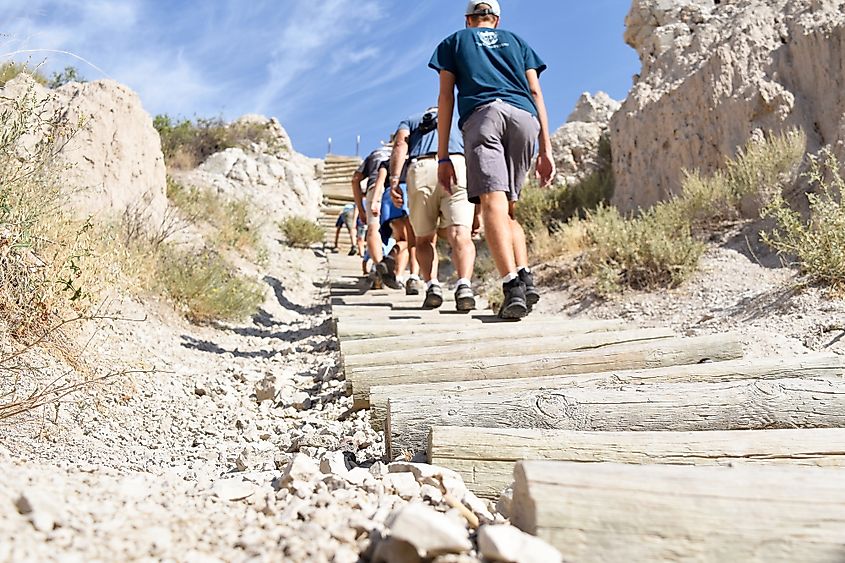
Hiking is a highlight at Badlands National Park, with trails for all skill levels. The Castle Trail, a mostly flat 10-mile round trip, leads hikers through prairie grasslands and dramatic rock formations. The Notch Trail, about 1.5 miles, is moderate and includes a memorable wooden ladder climb to a dramatic canyon view. Shorter options like the Door Trail, an easy 0.75-mile stroll through a break in the Badlands Wall, or the rugged Saddle Pass Trail, which climbs up steep, crumbly formations, make this a true hiker’s park.
Camping
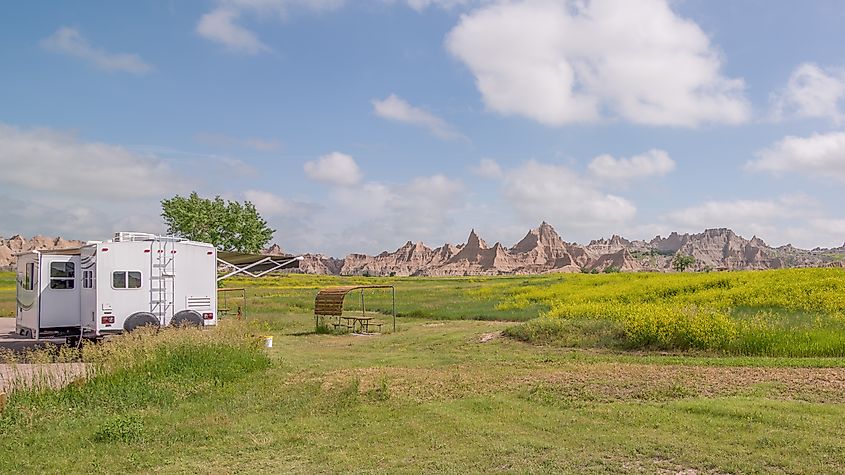
For campers, Badlands has two established campgrounds: Cedar Pass Campground, near the Ben Reifel Visitor Center, offers modern amenities, while Sage Creek Campground is primitive, free, and popular with those hoping to spot bison at dawn. Backcountry camping is allowed anywhere as long as you’re at least half a mile from roads or trails, but registration is required at the visitor center. Expect wide-open prairie, big skies, and strong winds. Proper gear and awareness of changing weather are musts for an unforgettable night under the stars.
Other Activities
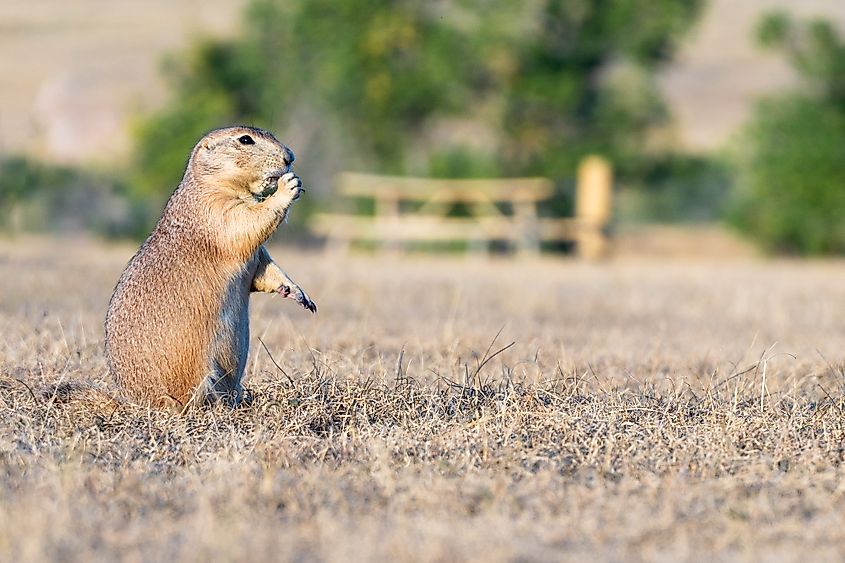
Besides hiking and camping, Badlands offers rich opportunities for wildlife spotting and stargazing. Black-footed ferrets, golden eagles, and bighorn sheep are common sightings if you’re patient and quiet on trails. Additionally, for nature lovers, stargazing is a popular nighttime activity with the Badlands Astronomy Festival offered during the summer months. Those camping outdoors can set up under the stars for a lovely sight rarely seen elsewhere. Don’t miss the Fossil Preparation Lab at the Ben Reifel Visitor Center, where you can watch paleontologists at work and learn about the park’s ancient fossil beds.
The Perfect Storm For Ancient Fossils
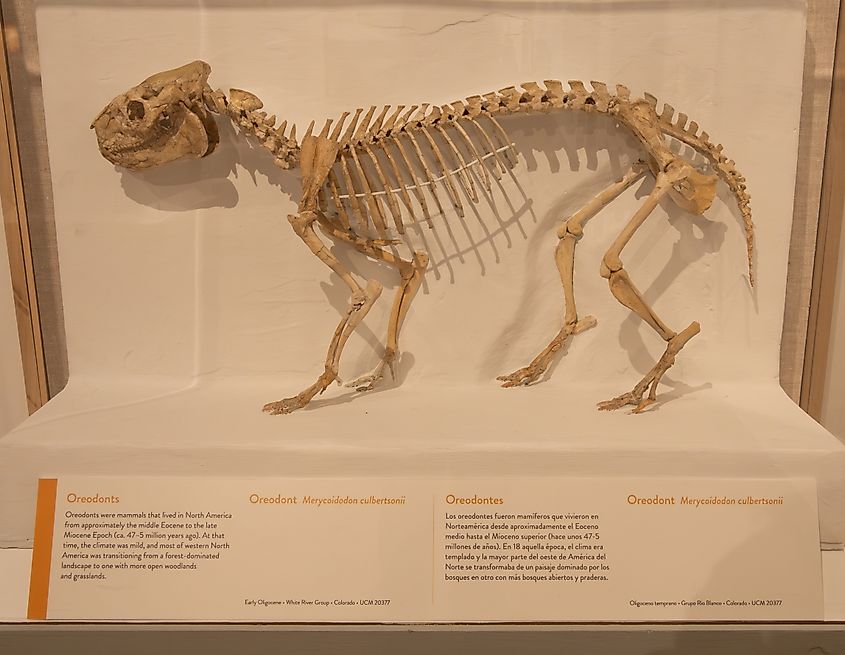
The layers of sediment that the ancient seaway laid on the water bed millions of years ago led to the creation of one of the most plentiful fossil beds known in history. Long ago, when animals that lived in the area died, they were buried under the sediments of the waterway and preserved to be found several million years later. For this reason, paleontologists continue to see them in the Badlands even today, as the park continues to reveal ancient fossils.
The list of fossil types found here is extensive, including plants, mammals, reptiles, birds, amphibians, and mollusks. Some of the most common fossils found here are Oreodonts (a sheep-like herbivore distantly related to the camel), Mesohippus (a three-toed horse), and Subhyracodon (a hornless rhinoceros). Several more unique fossils have also been found in the national park, one example being the Nimravid (a carnivore which is cat-like in its appearance).
The Big Pig Dig
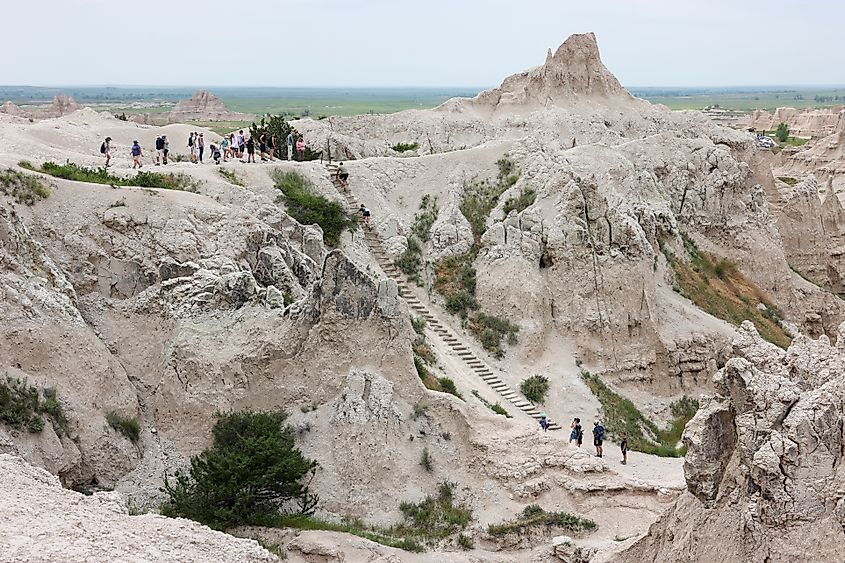
The Big Pig Dig was a well-intentioned, planned fossil extraction that turned into a massive excavation, removing over 19,000 fossils from the area. It all started in 1997 when two visitors noticed bones protruding from the ground in the picnic area and notified the national park officials. Initially, only the backbones (vertebrae) and limb bones were visible poking through the dirt. When the park officials discussed the situation, they decided that removing them would be the best course of action to prevent vandalism or theft. What they did not bargain on was that once they removed them, a host of other fossils lay underneath that they would need to continue to extract, causing a domino-like effect. With the shadows of the Martian-like butte labyrinths of the Badlands National Park surrounding them, onlookers then watched for 15 years as fossils were removed from the excavation.
Final Thoughts
Badlands National Park is a prime example of a natural phenomenon that could lead to significant future discoveries. Created by the processes of deposition through an ancient waterway and erosion caused by tectonic plate movement, this has resulted in not only the scenic geological formations we see today but also a rich collection of fossils hidden beneath. As paleontologists continue to complete skeletons of these ancient creatures, they uncover features of physiology and behavior that were previously unknown. This can lead to a greater understanding of climate, migration, and even links to today's ecosystems.
